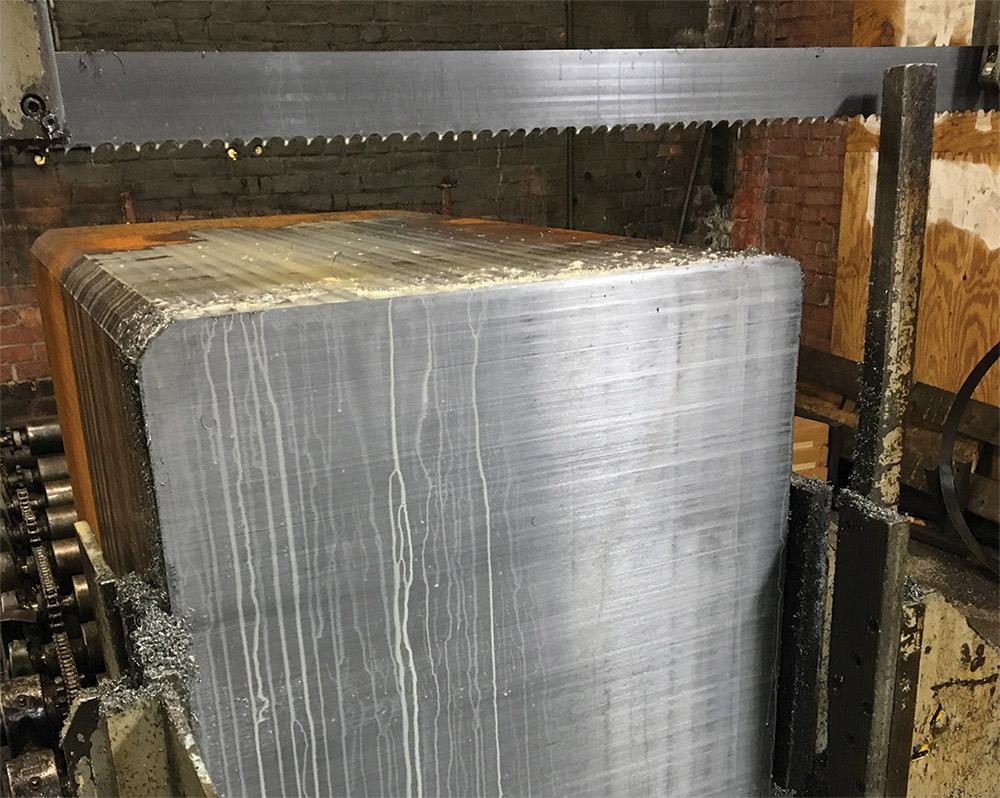BY MICHAEL MASTERS, WIKUS SAW TECHNOLOGY
veryone’s cutting challenges differ, so understanding available blade options is important when selecting the blade best suited for an individual application. Most saws are tasked with cutting more than one type of material in a variety of sizes and shapes, so Wikus technicians typically use the 80/20 rule when recommending blades. Analyze what you’re cutting, and choose the blade that will cover 80 percent of your applications. Although the choice may not be the perfect one for your remaining 20 percent, with proper feed and speed adjustments, the blade usually will perform sufficiently in those applications, too.

The Skalar M42 blade has a progressive tooth set, which allows the kerf to be produced by generating five chips, versus three chips with conventionally set blades. This gives each tooth the ability to take a thicker chip, which results in faster cutting. Pulling the chips across 26 inches of material increases the need for ample gullet capacity to evacuate the chips being produced.
Using our ParaMaster 4.0 app, we dialed in the recommended blade speed for the 4340M material to 95 surface feet per minute, adjusted the coolant flow and set our descent rate at 0.280 inches per minute to achieve a cutting rate of 7.5 square inches per minute.
Not only did the chips coming off the new blade have the correct appearance but also were being produced at a much faster rate than previously seen by the customer. Within the first few minutes of our 90-minute cut, the customer had also commented on how quietly the blade cut, compared with the normal noise level they experienced.
Maximizing a blade’s life and performance start when you take it out of the box. There are hundreds of small cutting tips on a band saw blade, and each is equally important. Handling the blade with care reduces the risk of chipping the tooth tips prior to use. Running the appropriate parameters for material size and type, proper coolant levels, chip brush and properly adjusted blade guides are just a few things that need to be maintained in order to achieve longer life.
In addition, an operator who understands the cutting process and the materials is a great asset to have. Selecting the right blade is just one step. An operator who realizes the importance of running the blade at the recommended parameters can increase blade life dramatically. He learns to read the chips, how they form, the color. He listens for the sounds to ensure the teeth are pulling chips. Maintaining the machine and adjusting coolant ratios accordingly will also increase the life.
The more sophisticated some of these materials become the more accurate the running parameters need to be when cutting them, and more companies should analyze their cutting costs. There are good, better and best solutions. Our ParaMaster 4.0 app provides access to our recommendations for the application based on the machine, the material, condition of the material and dimensions of that material. Being connected is the only way to stay ahead of your competition.
